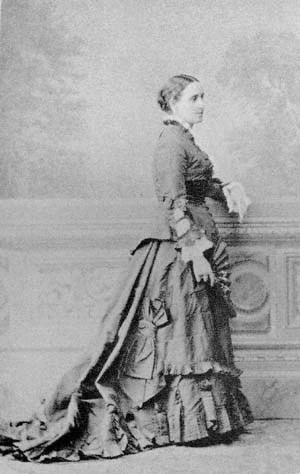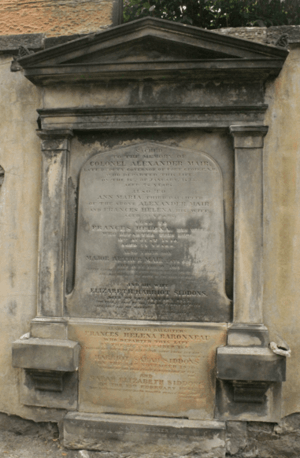Sarah Mair facts for kids
Quick facts for kids
Sarah Mair
DBE |
|
|---|---|

Sarah Mair, c. 1876
|
|
| Born | 23 September 1846 Edinburgh, Scotland
|
| Died | 13 February 1941 (aged 94) Buckinghamshire, England
|
| Nationality | Scottish |
| Known for | president of the Ladies' Edinburgh Debating Society |
Dame Sarah Elizabeth Siddons Mair (23 September 1846 – 13 February 1941) was an important Scottish leader. She worked hard to improve education for women. She also fought for women to have the right to vote.
Sarah Mair started the Ladies' Edinburgh Debating Society when she was very young. She also helped the Edinburgh Association for the University Education of Women. These groups played a big part in helping women get more rights and opportunities.
Contents
Sarah Mair's Early Life
Sarah Mair was born in Edinburgh, Scotland, in 1846. Her family was quite wealthy. Her father was Major Arthur Mair. Her mother was Elizabeth Harriot Mair. Sarah's great-grandmother was the famous actress Sarah Siddons. Her grandfather was actor Henry Siddons. The Mair family lived in a large home at 29 Abercromby Place in Edinburgh.
Starting the Ladies' Debating Society
When Sarah Mair was just 19, she started a group called the Edinburgh Essay Society. It was soon renamed the Ladies' Edinburgh Debating Society. Sarah became its president and led the group for 70 years!
The society met at the Mair family home. It gave women in Edinburgh a chance to talk about important social issues. They also learned how to speak in public and debate. This helped women become more confident and skilled.
The society even published a magazine. It was first called The Attempt. Later, it became the Ladies' Edinburgh Magazine in 1876. Sarah Mair helped edit the magazine. It connected women across the country.
Friends and Supporters
Many important women joined Sarah Mair's society. They all worked to support women's rights and education. Some famous members included:
- Louisa Stevenson and Flora Stevenson
- Louisa Lumsden, who started St Leonards School
- Charlotte Carmichael Stopes, mother of Marie Stopes
Fighting for Women's Right to Vote
Sarah Mair strongly believed that women should have the right to vote. This is called women's suffrage. Her debating society often discussed this topic. At first, most members did not support women voting. But over time, more and more people agreed with Sarah.
Sarah Mair was part of the Edinburgh National Society for Women's Suffrage. This was the first group in Scotland to campaign for women's votes. They sent speakers all over Scotland. Dr. Elsie Inglis, another important woman, was a secretary for this group.
Later, Sarah Mair became the president of this society. She also led the Scottish Federation of Women's Suffrage Societies. Sarah was good at bringing different groups together. She helped them work towards the same goal. When women over 30 finally got the right to vote in 1918, Sarah led the society into a new phase. It became the Society for Equal Citizenship, continuing to work for equal rights.
Improving Women's Education
Sarah Mair was also a key member of the Edinburgh Ladies' Educational Association. This group worked to give women the same university education as men. Sarah believed in taking small, practical steps. She thought this approach would lead to the best results.
In 1876, Sarah helped improve education before university. Classes were offered to help women get ready for university. There were also courses for those who could not attend in person.
Starting New Schools
In 1886, Sarah Mair helped set up St George's Training College. This was the first place in Scotland to train women to teach in high schools. Then, in 1888, they opened St. George's High School for Girls. This was the first day school in Scotland that taught girls up to university level. Girls from St George's were among the first women to graduate from Edinburgh University.
Work During World War I
During the First World War, Sarah Mair continued her important work. She was president of the Hospitals Committee for the Scottish Women's Hospitals for Foreign Service. This group raised money to help hospitals.
Sarah also helped with other projects. She was a treasurer for the Masson Hall project, which provided housing for women students. She also led committees for the Bruntsfield Hospital for Women and Children and the Elsie Inglis Memorial Maternity Hospital.
Even with all this work, Sarah found time for hobbies. She was skilled at archery and chess. She was also a member of the Ladies' Chess Club.
Awards and Recognition
Sarah Mair's hard work for women's education was recognized.
- In 1920, she received an honorary LLD degree from Edinburgh University.
- In 1931, she was awarded a DBE. This made her a "Dame," a very high honor.
Remembering Sarah Mair
Sarah Mair passed away in 1941 at her niece's home. Her funeral was held in St Mary's Cathedral in Edinburgh. An article in The Scotsman newspaper called her a "woman pioneer." It said she was a "venerable and notable Edinburgh lady, one who has helped make history in her time."
Sarah Mair is remembered on her family's memorial. It is located in St. Cuthbert's Churchyard in Edinburgh.
See also
 In Spanish: Sarah Mair para niños
In Spanish: Sarah Mair para niños



